We’ve lived in Okinawa for almost a year now.
(Can’t believe it’s been nearly a year since this post!)
There are many things that living in Okinawa has taught me, but the one I want to focus on in the next couple of posts is…food!
One of the first things you notice when you come to this island & interact with the locals is that they are typically petite. Very petite. As in really small.
What I mean is–they are the skinniest, tiniest people I have ever seen.
A blend of cultures
Okinawa is home to a blend of cultures. Primarily the native Okinawans & the Japanese.
You’ll find that many people here share both ethnic backgrounds. So while there are many people who clearly “look” Japanese, there are also others who look more Polynesian, South Asian or Philipino with darker skin & varying shades of brown/auburn hair (rather than black).
There is also a small Filipino population on the island, as well as a smattering of Chinese & other Asian cultures. And of course, there are the transient Americans here like me, who are here for a few years at a time as part of US military service.
Both cultures produce a people that on the whole is petite (it’s rare to see a woman taller than 5’4″ or a man taller than 5’7″ or so). Pure Okinawans (ie. no Japanese blood) have a unique look–they have broader features & are generally smaller than the Japanese (who already tend to be rather small framed).
One of my favorite ladies in my neighborhood is woman in her eighties or nineties, is no more than 5 feet tall (probably about 4’10”), weighs no more than 80 pounds soaking wet. I usually see her in her small patio garden, weeding & tending to to her plants or taking walks around the neighborhood.
After you notice how tiny these people are, the next logical thought is…(at least for me it was), how/why are these people so small? Not only are they very thin, they are also extremely small framed.
This might not strike some of my international readers as anything special, but coming from the US, where it’s not uncommon to see people over 6 feet tall, or people who weigh more than 200 or 300 pounds (which you will never find in Okinawa), it is a bit strange to be surrounded by only small, thin people (except for the other Americans here!).
No doubt genetics plays a role, but I think this is only a fraction of what’s going on.
The Okinawans aren’t marathon runners. They aren’t exercising all day long. There is a biking culture here & many people do walk from place to place, but most people drive & spend a lot of time in cars as there are no subways & public transportation isn’t great.
So combine genetics, minimal exercise & you’ve got part of the picture.
But I think diet is at the heart of it, & plenty of research has been done in regards to the health/longevity of Okinawans to support this.
The Okinawan Diet
The Okinawans absolutely do eat differently than the rest of the world.
I’ve been shopping at my local grocery store & vegetable stands, & eating at local, authentic Okinawan restaurants for going on 11 months now & I’ve learned quite a bit about how & what they eat & how these choices have created a diet that is one of the healthiest on the planet.
I’ve decided to break down my findings over a series of postings.
In this series, I will share with you what I’ve learned about:
- portion control (it matters!),
- fermented vegetables (they’re awesome!),
- soy (it’s not evil),
- soup & rice (the foundation of any Okinawan meal),
- veganism here (it doesn’t really exist–the Okinawans aren’t vegan, let alone vegetarian),
- the place of meat in their diet (it’s really very, very different from the SAD),
- dairy foods (they eat it, kinda),
- seaweed (it’s like a food group here),
- noodles (there are sooooo many kinds),
- & more
The Bento
Today I want to discuss the bento.
The bento is a little box of goodness–originating from mainland Japan, it is a tiny container or containers of food. People eat bentos for breakfast, lunch or dinner. A traditional bento always contains rice (a meal is not a meal without rice!), some vegetables (usually fermented or cooked), & a little bit of fish, seaweed, &/or tofu.
I have become accustomed to the bento primarily through my 5 year old’s school.
Salem attends a private Japanese Christian school (she’s the only American, & her teachers don’t speak English, so yes, she’s learning Japanese rather quickly) where she eats a traditional Okinawan meal (rice/noodles, soup, vegetables, a small slice of fruit & some fish, which they omit for Salem’s meal) on Mondays, Tuesdays, Thursdays, & Fridays, but takes a bento from home on Wednesdays.
One of the first things the principal told me when Salem started school there was to NOT put American sized portions in her lunch.
So NO American sized muffins, cookies, pudding cups, or even sandwiches.
Everything was to be small & well proportioned, especially with respect to the other foods in the meal.
It took me a few months to get the hang of it.
For the first few months I just sent a PB sandwich cut into four pieces with a few other things like fruit or vegetables with it, in a brown paper bag (how American!). I got in trouble a few times for committing some offenses.
Once I sent a small Quaker 100 calorie granola bar (we can get that kind of stuff from the commissary on base) & Salem wasn’t allowed to eat it & I was told not to send stuff like that because “it is too big.”
Another time I got in trouble for sending a banana in her lunch. A whole banana! Not cut up! A huge taboo from a Japanese perspective.
After a few months at the school, & lots of pleading & begging from Salem to get her own “handkerchief” (that’s what she calls the drawstring bag that carries the bento), I finally bought some bento accessories & learned the basics of the bento.
To understand the bento, is to really understand so much about the Okinawan, & more broadly the Japanese, diet.
First, portions should be small.
Second, there must be rice. Always rice.
Third, presentation is everything. Cut up your vegetables. Cut up your fruit. Make it pretty, make it fun.
Fourth, organize your food in a thoughtful, cohesive manner.
Fifth, all foods should be in proportion to the rest of the food in the bento. In other words–no ungodly (ie. American) portion sizes!!
Here’s Salem’s bento.
Salem’s bento isn’t strictly traditional in terms of the foods I put in it, but I do always include some rice & furikake (dried seaweed flakes used to top rice).
She carries it a little cotton drawstring bag (this is the traditional way all school children carry their bentos).
I put her food in two little containers that stack on top of each other (the chopsticks & cutlery are on the top).
I include a container of (sushi or sticky) rice (onigiri–essentially a rice ball), a packet of furikake, & a container of agar-based jello (see how tiny it is!–compare to an American size of jello).
Here’s a sample bento*, one that I made for her just yesterday:
- two small PB heartshaped sandwiches
- 3/4 of a kiwi cut up into bite size pieces
- apple chunks tossed in lemon juice, cinnamon & sugar
- carrot slices cut into fun shapes like stars & numbers
- plain onigiri (just a plain rice ball formed in the shape of triangle)
- & for dessert, a small piece of leftover cinnamon roll
*Adult bentos are more simple than the one I made for Salem–rice, vegetables, some fish/seaweed, or tofu.
The Japanese & the Okinawans train their children from very young how to eat well.
From an American perspective, I admit at times I’ve thought, “they eat like birds–this is why they are so small!”
At one point, the principal told me Salem about how much she ate during lunch (they can have seconds on the days they eat school lunch), & about how much she talks about being hungry. And I was like, “Of course–she’s American, she’s big, & she’s hungry, & therefore she obviously needs to eat more than her peers!”
But the Japanese way of eating, is in most respects, the better way.
There is so much attention to detail that goes into eating, which translates to more awareness before, during & after a meal. The bento demonstrates the Japanese perspective on portion control, symmetry & the presentation of food.
All of these factors translate into a more nutritious, less calorie-dense way of eating–crucial points for longevity & health.
Anything specific you want to see or know about as it relates to Okinawan food/diet? Let me know in the comments below & I will do my best to address it in upcoming posts in this series.
→ Need some inspiration in the kitchen?
Check out my 28 day vegan, gluten-free, whole-foods based meal plan!
Other bring joy posts you might want to check out:
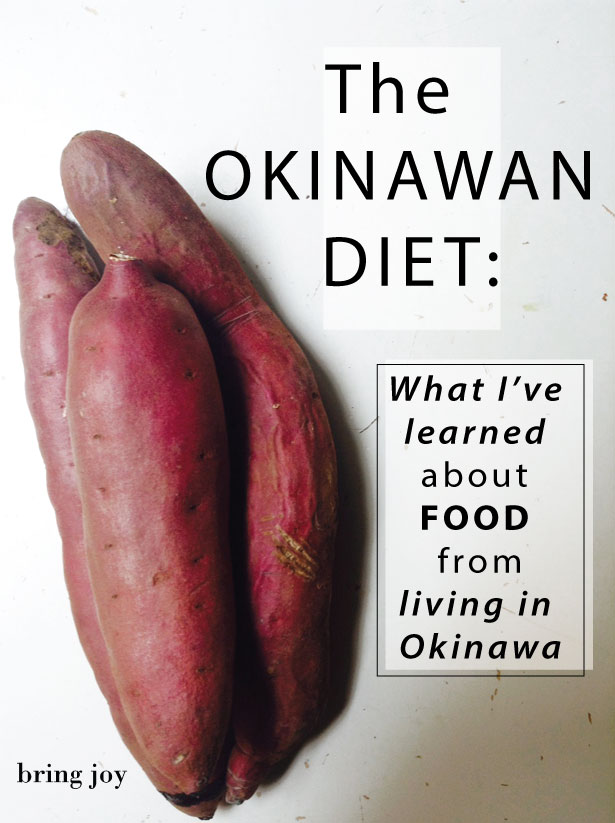
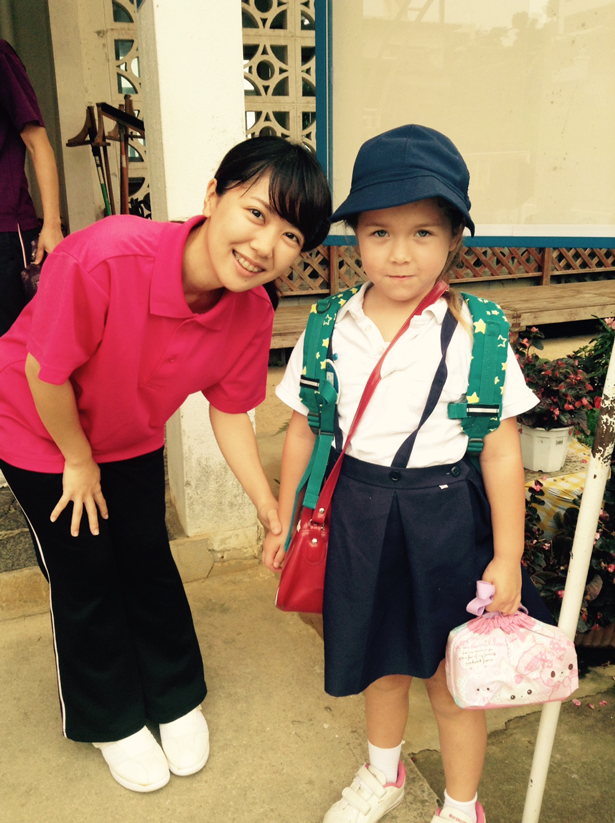
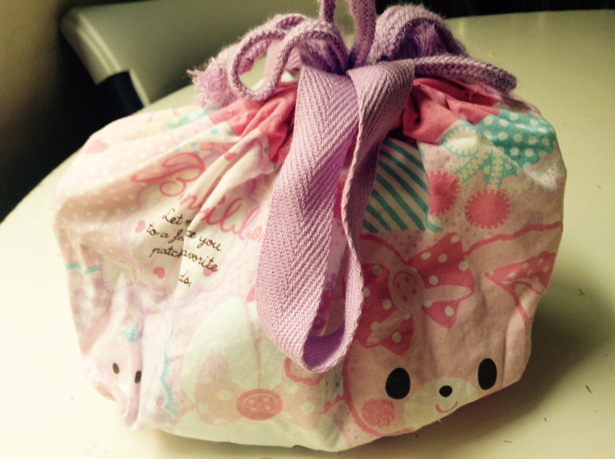
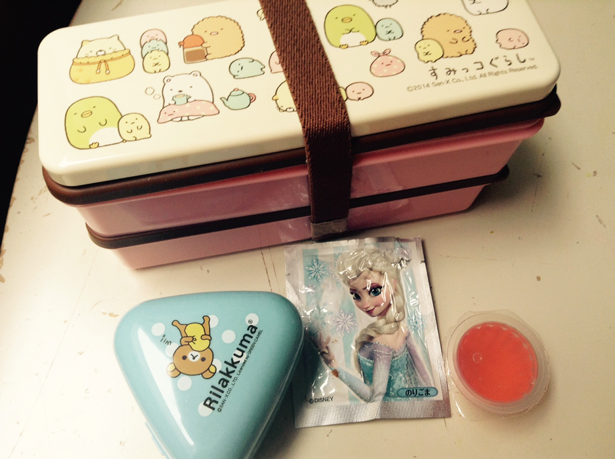
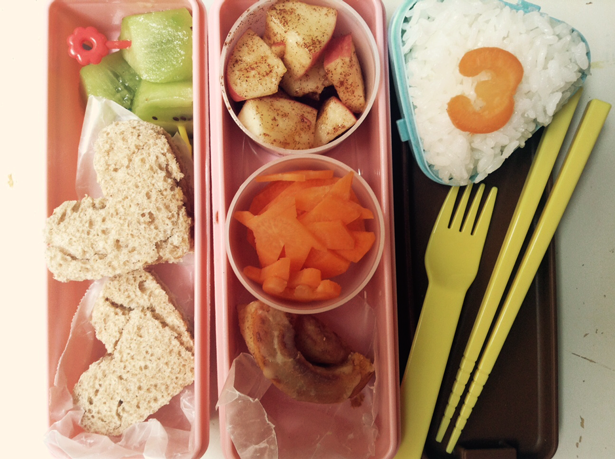



Comments